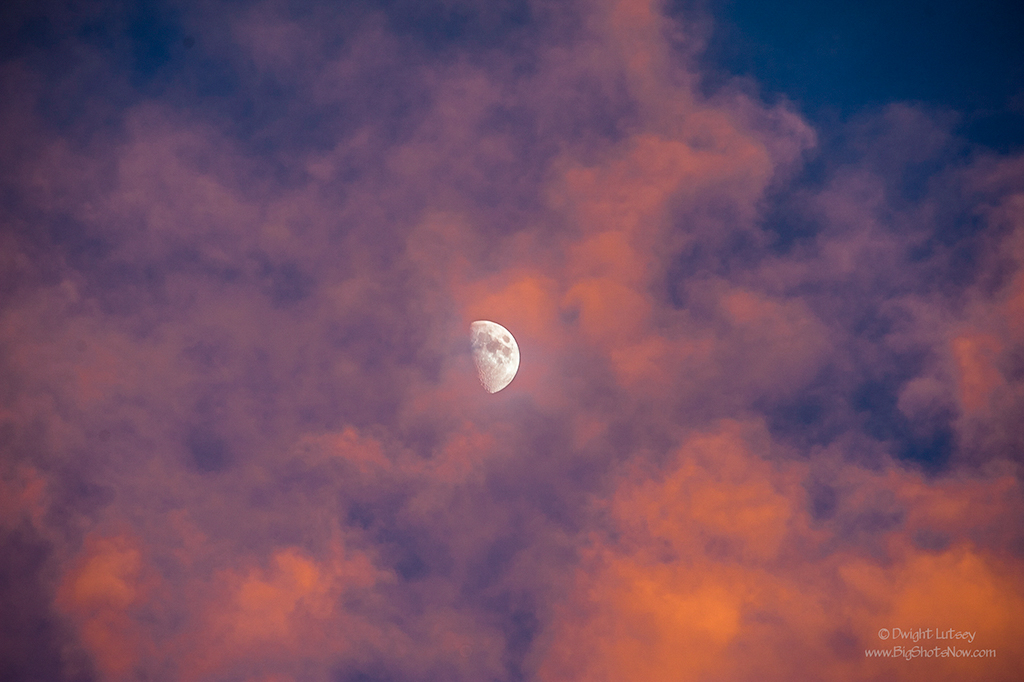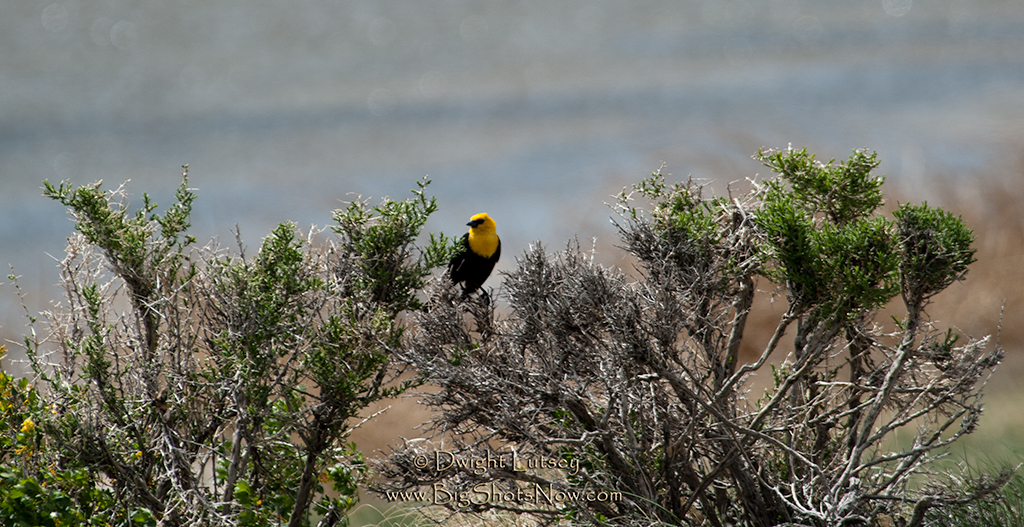The other morning when we had the interns removing the tarps from the roof of the Sunset viewing tower here at The Institute they began shouting “Boss Look, the moon, the moon, boss. It is out! And it is day. What does this mean?” At least that’s what we thought they were shouting. It’s kind of hard to hear when they’re 350′ up in the air and the wind gusts are peaking at 55-60 miles an hour.
We let one of them come down so we could understand them better and the babbling began to make sense. They had seen the moon in the sky during sunrise and in their simple superstitious minds thought this was the end of the world. They were getting ready to jump off the roof in an effort to keep something terrible from happening to them but we were able to drive their messenger back up the tower to convince them it was alright. Nothing terrible was going to happen to them unless they came down before the tarps were removed. The last thing we needed was some replay from Homer “and when the rosy fingered dawn occurred the interns fell from the sky etc…” That would take up half the morning getting that squared away.
It turns out that this particular batch of interns included a bunch from rural Greece and each one of them had the Selenophobia gene. Selenophobia is the fear of the moon. Yeah, we know, that is weird but we got this batch from Interns-R-Us and they have a no return policy that is airtight. You can’t even donate them back. If you leave them on their front stoop with a refund request Interns-R-Us will simply put them back on the shuttle and send them to your front gate again. They’re yours and that’s that. You have to send the half-track down to go get them, otherwise they mill around down there by the front gate which is right on the highway, throwing stones at passing cars, ripping the shrubbery out of the ground, writing what can only be some kind of rude graffiti on our mailboxes. They smeared something terrible on the lens of our security cameras down there so we couldn’t see what they were doing. It makes The Institute look bad so we gird our loins and go cart them back here. It is not easy running an organization as complex as the Institute.
We immediately set our xeno-anthropology department to work developing a program to treat and cure these interns of their Selenophobia. We are lucky enough to have Margaret Mead’s great, great cousin’s Aunt by her second marriage, grandchild, Curtis Leroy Moonboy, on our staff to head up this program. Mr. Moonboy or as he is known by his peers, twitchy speaks a dialect of the interns language or at least we think he does, he’s hard to understand sometimes, so he’ll be perfect for this project. We just hope Maggie’s genes kick in and help him get this together. Although the odds in the weekly pool have him down as 460 to 1 that he’ll be able to pull this off.
We need to cure these simple but unresponsive interns because we here at The Institute have a simple code ‘Fix ’em or Cull ’em’ and we need them well and functional. For their health and because we cannot get anyone else to go up there on the tower roof to put up and take down the tarps. So twitchy better get something going otherwise he’s going up there himself. The image above shows the moon clearly out in the sky as the sun comes up and lights the clouds in a rosy hue. We all think it’s pretty but then we don’t have Selenophobia.



You must be logged in to post a comment.